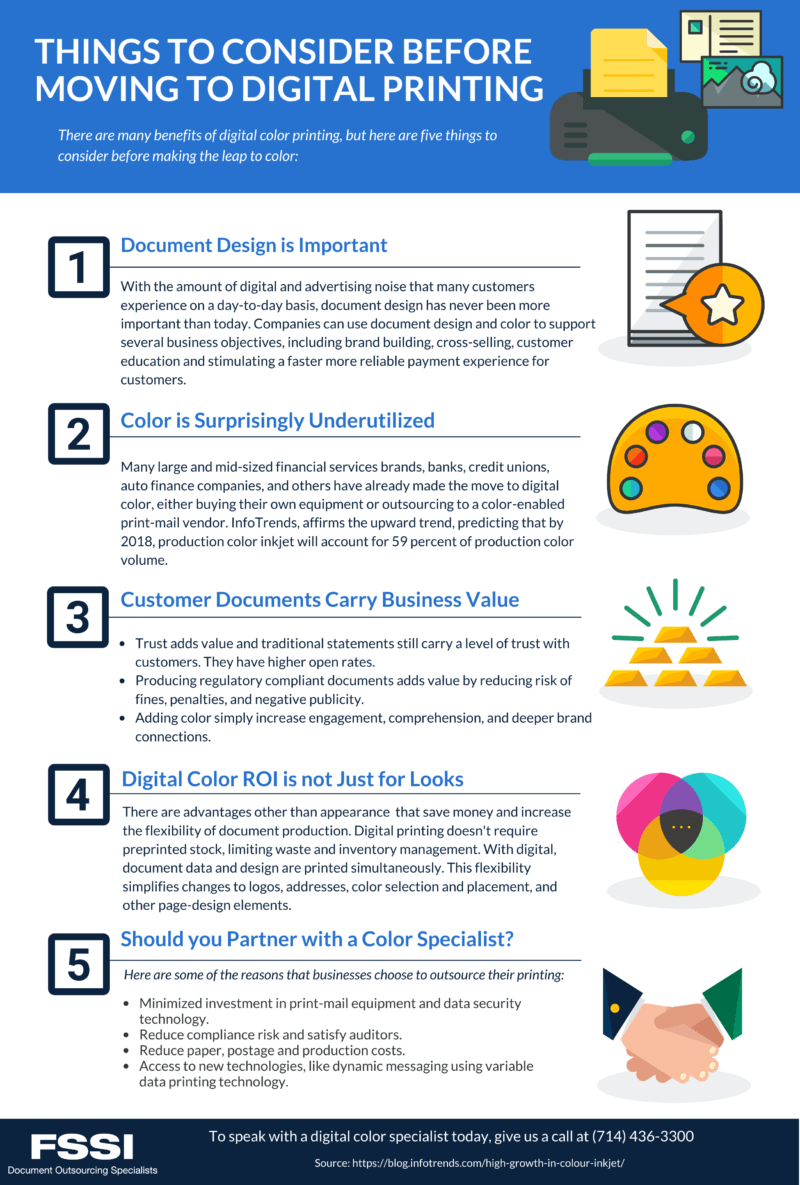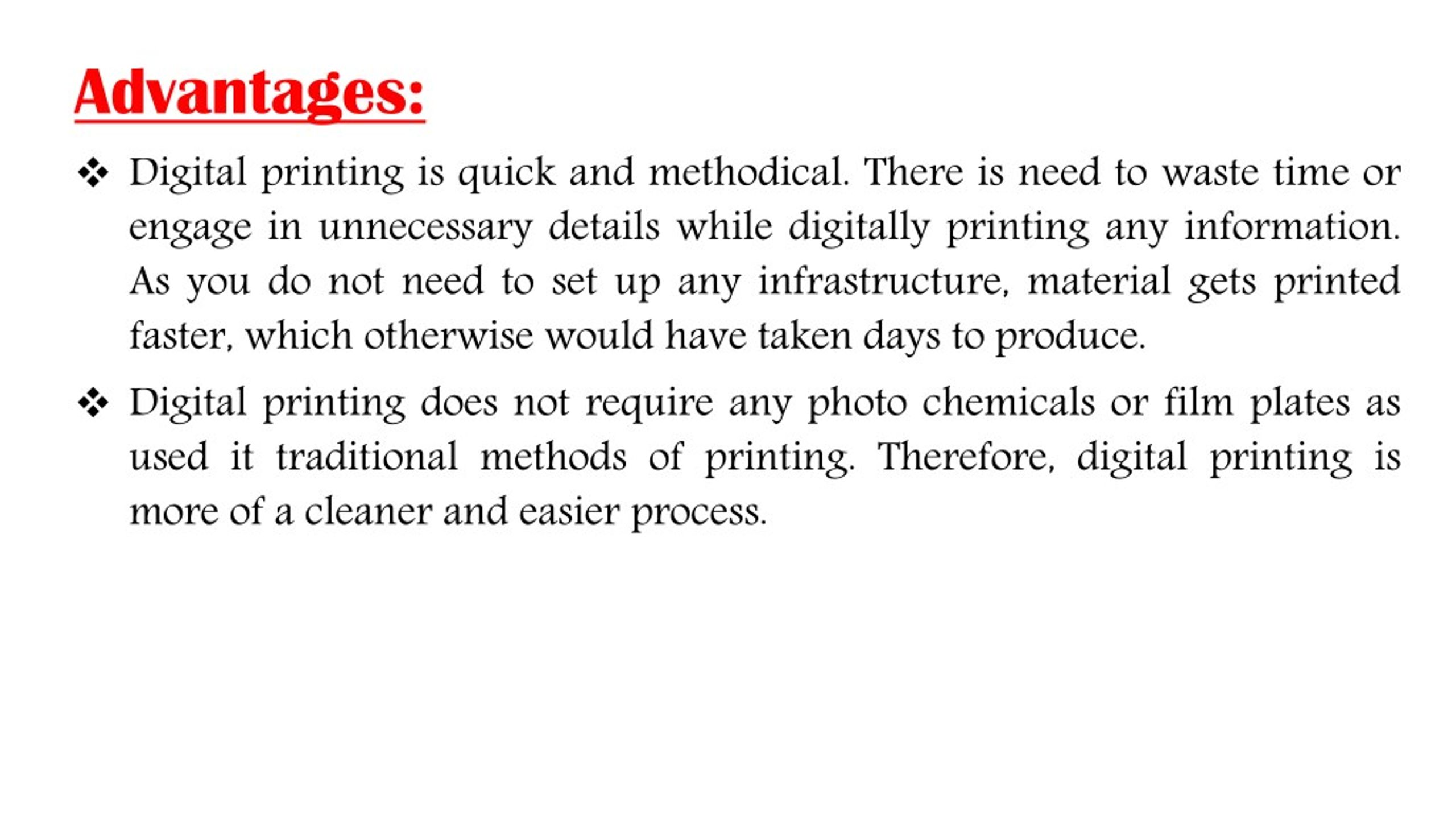The Best Strategy To Use For Digital Printing
Table of ContentsDigital Printing Can Be Fun For EveryoneRumored Buzz on Digital PrintingLittle Known Questions About Digital Printing.About Digital PrintingSome Known Details About Digital Printing The Facts About Digital Printing Uncovered
Variable information printing, such as direct mail with individualized codes and addresses, is ideally fit for electronic printing. Digital fast printing just requires four steps of design, evaluation, printing and binding to obtain everything done. Digital quick printing has an unequaled advantage: print on demand.According to PMMI, electronic printing allows brands and suppliers to respond rapidly to consumer needs while enhancing the supply chain, decreasing warehousing price and waste, and enjoying faster time to market. That all sounds terrific, however how does this modern technology do all that? The significant differentiator of these technologies is that there are no set-up costs and no plates with digital printing.
Rumored Buzz on Digital Printing
According to Wikipedia, the greatest distinction between electronic printing and conventional techniques such as lithography, flexography, gravure, or letterpress - Digital Printing is that there is no need to change printing plates in digital printing, whereas in these analog printing approaches home plates are repetitively replaced. This results in quicker turn-around time and reduces price when making use of digital printing.
Digital printing is very flexible, so it's very easy to make adjustments to the bundle design promptly. It all goes back to the plates.
More inventory can imply even more waste in the future. With conventional printing methods, short-run printing is simply not possible. Due to the fact that a great layout can make or break your product, electronic printing constantly creates high-quality, clear and vivid graphics each time. Digital printing on flexible bags adds the intense, vibrant, and precise graphics that virtually beckon customers to connect and touch them.
Digital printing is the procedure of printing digital-based photos straight onto a selection of media substratums. There is no need for a printing plate, unlike with countered printing. Digital data such as PDFs or desktop publishing files can be sent out directly to the electronic printing press to print on paper, photo paper, canvas, textile, synthetics, cardstock and other substratums.
Digital Printing Can Be Fun For Anyone
According to PMMI, digital printing allows brand names and suppliers to respond swiftly to client needs while boosting the supply chain, lowering warehousing expense and waste, and taking pleasure in faster time to market. That all audios wonderful, yet just how does this technology do all that? The visit major differentiator of these technologies is that there are no set-up fees and no plates with digital printing.
According to Wikipedia, the greatest distinction in between digital printing and typical methods such as lithography, flexography, gravure, or letterpress is that there is no requirement to replace printing plates in digital printing, whereas in these analog printing approaches home plates are repetitively replaced. This causes quicker turnaround time and decreases price when using digital printing.

The Ultimate Guide To Digital Printing
Much more stock can indicate even more waste later on. With conventional printing approaches, short-run printing is simply not possible. Due to the fact that a great style can make or damage your product, resource digital printing consistently develops top quality, clear and vivid graphics each time. Digital printing on adaptable bags includes the intense, vibrant, pop over to this web-site and exact graphics that almost beckon consumers to connect and touch them.

According to PMMI, electronic printing allows brands and suppliers to respond rapidly to client demands while improving the supply chain, decreasing warehousing cost and waste, and enjoying faster time to market. That all noises wonderful, yet just how does this modern technology do all that? The significant differentiator of these technologies is that there are no set up charges and no plates with electronic printing.
The Ultimate Guide To Digital Printing
According to Wikipedia, the best distinction in between digital printing and standard methods such as lithography, flexography, gravure, or letterpress is that there is no demand to replace printing plates in digital printing, whereas in these analog printing approaches home plates are repetitively changed. This leads to quicker turnaround time and lowers price when making use of digital printing.
Digital printing is highly flexible, so it's simple to make changes to the plan design rapidly. It all goes back to the plates.

3 Simple Techniques For Digital Printing
Digital printing is the process of printing digital-based photos straight onto a range of media substratums. There is no demand for a printing plate, unlike with offset printing. Digital data such as PDFs or desktop computer publishing data can be sent out straight to the electronic printing machine to publish on paper, image paper, canvas, material, synthetics, cardstock and various other substratums.